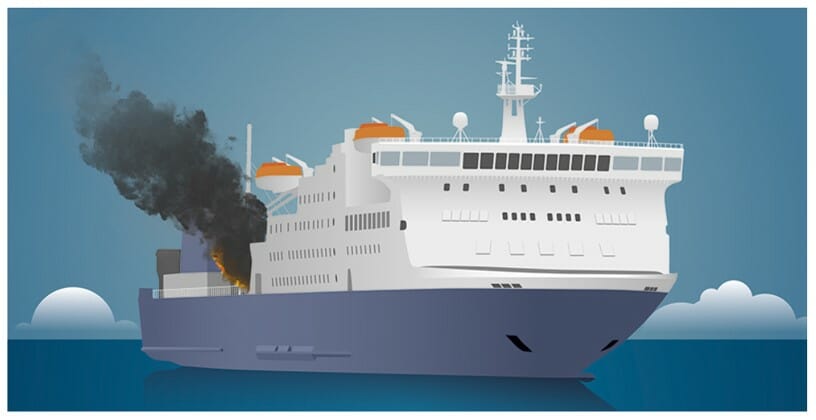A joint development project by industry-leading companies and DNV-GL, including the Norwegian Maritime Authority, ABB, Kongsberg, Damen, FiFi4Marine, Stena Line and the Norwegian Defence Research Establishment, has concluded that FiFi4Marine has the best heat-mitigating performance compared with all other methods tested for Li-Ion battery fires.
In 2017, DNV-GL embarked upon a joint project with market-leading companies and stakeholders to enable persons assessing energy storage installations, whether from a design, engineering or regulatory perspective, to better evaluate the performance of fire-extinguishing solutions for Li-Ion fires.
The primary objective of the report is to provide information which enables engineers to better understand the risks and benefits of each system and select the most effective protection systems for each application.
As part of this investigation, the FiFi4Marine (F4M) Li-Ion fire extinguishing system, a direct injection foam system, was tested and compared against the most commonly used conventional systems.
The group concluded that direct injection of foam shows the best heat-mitigating performance compared with all other methods tested. Direct injection of foam had the highest potential for module-to-module fire mitigation, especially when designed with capacity to flood the modules/racks over longer time periods. In cases where alternative ship integration concepts are to be evaluated – such as a battery installed without a dedicated battery room – this may be a particularly attractive approach to evaluate the equal level of safety.
“We are very happy with these results since they show that the F4M system is outstanding and achieved the maximum scores on all primary objectives. It is also worth pointing out that the use of direct-injection of water is not recommended for high-voltage systems”, says F4M CEO, Cor Meedendorp.
Background
Like any energy source, lithium-ion batteries pose significant fire and safety risks. As seen recently during the Norled incident in Norway (ref https://corvusenergy.com/fire-onboard-the-car-ferry-ytteroyningen-preliminary-investigation-results/) fitting the appropriate fire extinguishing system is extremely important. The team investigating the Norled fire concluded that the fire-fighting systems were not fit for purpose and, in fact, escalated the fire and contributed to the cause of the explosion.
In general, fire suppression is more effective when detected and deployed early and if it can be released into the module. Key factors to evaluate as far as requirements are short term cooling, long term cooling, and gas absorption.
F4M System
The F4M is a relatively new system and is the first on the market to effectively and safely extinguish a Li-Ion battery fire without causing great collateral damage. F4M’s system has been extensively tested by DNV-GL and is considered the only real direct-injection fire-extinguishing system. In addition, the F4M system is bio-degradable, fluor free, non-toxic, non-corrosive, requires little water and is completely stand-alone. It requires no emergency power and has a long operation time (over 3 hours).
In combination with the early warning electrolyte off-gas sensor Li-Ion tamer the system offers remarkable safety unrivalled in the industry.
F4M CAFS system is in the final phases of wheel mark classification approval under inspection by DNV-GL. Certification is scheduled to be issued end of Q1 2020.








